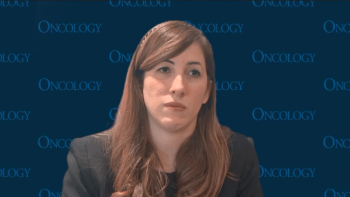
Can Extended Letrozole Therapy Reduce Breast Cancer Recurrence Risk?
The GIM4 study looked at the effect of 2 to 3 years vs 5 years of letrozole on risk of recurrence in HR-positive early breast cancer.
Treatment with 5 years of letrozole offered slightly better disease-free survival (DFS) than 2 to 3 years of therapy following 2 to 3 years of tamoxifen in postmenopausal hormone receptor–positive early breast cancer, researchers reported.
“Hormone receptor–positive breast cancers are at high risk of late recurrence,” said Lucia Del Mastro, MD, of the Ospedale Policlinico San Martino-Oncologia Medica. “[There are] more recurrences after 5 years than in the first 5 years after diagnosis.” Whether or not extended endocrine therapy following tamoxifen provides a clinical benefit remains an unresolved question in this setting. Del Mastro presented results of the GIM4 study aiming to answer this question at the 2019 American Society of Clinical Oncology (ASCO) Annual Meeting (
The GIM4 study included 2,056 women treated at 64 centers in Italy. All patients received tamoxifen for 2 to 3 years, and then were randomized to receive letrozole for either 2 to 3 years (1,030 patients) or for 5 years (1,026 patients). Patients had a median age of approximately 60 years; 6% of each cohort had HER2-positive disease. The median duration of tamoxifen was 2.4 years in the control group, and 2.5 years in the extended letrozole group.
Early treatment discontinuation was more frequent in the extended letrozole group, with 43% discontinuing early compared with 24% in the control group. The reasons for discontinuation in the extended group included toxicity (13%), patient refusal (9%), primary disease event (6%), and others.
The 10-year estimated DFS rate in the full intention-to-treat population was 74% in the control group and 77% in the extended therapy group, for a hazard ratio of 0.84 (95% CI, 0.69–1.03; P = .09). Distant recurrence was the most common first DFS event, in 7.5% of control patients and 6.7% of extended therapy patients. Second primary cancer occurred in 6.3% and 5.5% of the 2 groups, and deaths without recurrence occurred in 4.8% and 4.1%, respectively.
In a landmark analysis that included 1,891 patients, where time 0 was defined as the point when treatment diverged in the 2 groups (2 to 3 years after randomization), the difference was slightly larger, with an 8-year DFS rate of 72% with 2 to 3 years of letrozole compared with 77% with 5 years of therapy, for a hazard ratio of 0.81 (95% CI, 0.65–1.00; P = .051). Overall survival was similar across the 2 groups for both the intention-to-treat population and the landmark analysis.
There were some differences in side effects, given the longer treatment duration. A total of 81 patients in the extended therapy group (8%) had osteoporosis, compared with 47 patients in the control group (5%).
“These findings are consistent with the results of previous studies and in my opinion suggest that tamoxifen for 2 to 3 years followed by an aromatase inhibitor for 5 to 6 years is a strategy of extended treatment which could be considered in breast cancer patients at residual risk of breast cancer recurrence,” Del Mastro concluded.
Newsletter
Stay up to date on recent advances in the multidisciplinary approach to cancer.





















































































